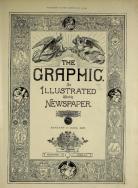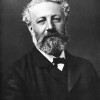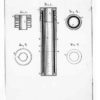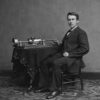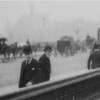Technology
Created by Carrie Sickmann on Thu, 04/18/2024 - 11:28
Part of Group:
Chronology of historical events related to the rise of technology and media
Timeline
Chronological table
| Date | Event | Created by | Associated Places | |
|---|---|---|---|---|
| 30 Dec 1819 |
Gag Acts
Articles |
David Rettenmaier | ||
| 1 Aug 1836 |
Newspaper Act
Related ArticlesElaine Hadley, “On Opinion Politics and the Ballot Act of 1872″ |
David Rettenmaier | ||
| 10 Jan 1840 |
launch of UK Penny PostThe introduction of the Penny Post in 1840, the rapid expansion of the rail network in the UK, and the introduction of steamships on the transatlantic routes, created the optimum conditions for writing letters. Prior to 1840, the cost of inland postage was prohibitively expensive; it was calculated according to the number of sheets multiplied by the distance traveled. Additional charges were often levied and the burden of payment fell on the recipient, which did nothing to encourage frequent communication. The Penny Post Act drastically reduced the cost of an inland letter to a universal flat rate of just one penny for a half an ounce, and the introduction of the prepaid penny stamp removed the deterrent to accepting a letter. Articles |
David Rettenmaier | ||
| 17 Jul 1841 |
Punch launchedOn July 17 1841, Punch, a mass-circulation periodical, was launched. Articles |
David Rettenmaier | ||
| 14 May 1842 |
The Illustrated London News launched
Articles |
David Rettenmaier | ||
| 1848 |
US/UK Postal ConventionPrior to 1848, a postal war between the US and Britain had resulted in prohibitively high charges for transatlantic mail—with the American post office levying a surcharge of up to 8 cents for incoming mail. An agreement was eventually reached under the Postal Convention of 1848 which governed postal relations with the United States for nearly twenty years. A single rate of 1s 0d. now prepaid a letter to its final destination with no extra charge expected from the recipient. Exact date unknown; if you have information about the correct date, please email [email protected] with this information. Articles |
David Rettenmaier | ||
| 1 May 1851 to 15 Oct 1851 |
Great Exhibition
The Great Exhibition of 1851 was an event in the history of: exhibitions; world’s fairs; consumerism; imperialism; architecture; collections; things; glass and material culture in general; visual culture; attention and inattention; distraction. Its ostensible purposes, as stated by the organizing commission and various promoters, most notably Prince Albert, were chiefly to celebrate the industry and ingeniousness of various world cultures, primarily the British, and to inform and educate the public about the achievement, workmanship, science and industry that produced the numerous and multifarious objects and technologies on display. Designed by Joseph Paxton, the Crystal Palace (pictured above) was a structure of iron and glass conceptually derived from greenhouses and railway stations, but also resembling the shopping arcades of Paris and London. The Great Exhibition of the Works of Industry of All Nations became a model for World’s Fairs, by which invited nations showcased the best in manufacturing, design, and art, well into the twentieth century. ArticlesAudrey Jaffe, "On the Great Exhibition" Related ArticlesAviva Briefel, "On the 1886 Colonial and Indian Exhibition" Anne Helmreich, “On the Opening of the Crystal Palace at Sydenham, 1854″ Anne Clendinning, “On The British Empire Exhibition, 1924-25″ Barbara Leckie, “Prince Albert’s Exhibition Model Dwellings” Carol Senf, “‘The Fiddler of the Reels’: Hardy’s Reflection on the Past” |
David Rettenmaier | ||
| 15 Jun 1855 |
Stamp Act
Related ArticlesElaine Hadley, “On Opinion Politics and the Ballot Act of 1872″ |
David Rettenmaier | ||
| 25 Aug 1862 |
Victoria Station openedOn 25 August 1862, London Victoria Station was opened, connecting London to the Kent coast. Related ArticlesPaul Fyfe, “On the Opening of the Liverpool and Manchester Railway, 1830″ Nancy Rose Marshall, “On William Powell Frith’s Railway Station, April 1862″ |
David Rettenmaier | ||
| 4 Dec 1869 to 1932 |
Launch of The GraphicAn illustrated weekly paper known for its social realism and the high-quality of its illustrations, The Graphic was one of the periodicals that Clemence and Laurence Housman pored over as children in their country home in Bromsgrove. Laurence recalled that The Graphic stimulated the siblings’ interest in the outside world and its issues (Unexpected Years). Later, working as a professional reproductive wood engraver in London, Clemence Housman engraved woodblocks for The Graphic from approximately 1885-1895. |
Lorraine Janzen Kooistra | ||
| 6 Nov 1872 to 22 Dec 1872 |
Around the World in Eighty Days Related Articles |
David Rettenmaier | ||
| Jul 1877 to Dec 1877 |
Conception and invention of the tinfoil phonographThomas Alva Edison conceived of and developed the tinfoil phonograph between July and December 1877. The tinfoil phonograph entailed applying malleable foil to the phonograph cylinder for indentation by a stylus attached to a diaphragm. Image: Illustration from “Patent Application, Thomas Alva Edison, April 17th, 1890.” _Edison Papers Digital Edition_. Web. 7 Nov. 2019. ArticlesJason Camlot, "The First Phonogramic Poem: Conceptions of Genre and Media Format, Circa 1888" Related ArticlesJules Law, "Victorian Virtual Reality" Christopher Keep, "The Introduction of the Sholes & Glidden Type-Writer, 1874" |
David Rettenmaier | ||
| 24 Dec 1877 |
Patent filed for the tinfoil phonographThomas Alva Edison filed for a patent for the tinfoil phonograph on 24 December 1877. The tinfoil phonograph entailed applying malleable foil to the phonograph cylinder for indentation by a stylus attached to a diaphragm.
ArticlesJason Camlot, "The First Phonogramic Poem: Conceptions of Genre and Media Format, Circa 1888" Related ArticlesJules Law, "Victorian Virtual Reality" Christopher Keep, "The Introduction of the Sholes & Glidden Type-Writer, 1874" |
David Rettenmaier | ||
| 19 Feb 1878 |
Patent issued for the tinfoil phonographThomas Alva Edison was issued with a patent for the tinfoil phonograph on 19 February 1878. The tinfoil phonograph entailed applying malleable foil to the phonograph cylinder for indentation by a stylus attached to a diaphragm.
ArticlesJason Camlot, "The First Phonogramic Poem: Conceptions of Genre and Media Format, Circa 1888" Related ArticlesJules Law, "Victorian Virtual Reality" Christopher Keep, "The Introduction of the Sholes & Glidden Type-Writer, 1874" |
David Rettenmaier | ||
| May 1888 to Jun 1888 |
The “perfected” phonographIn Thomas Alva Edison’s update on “The Perfected Phonograph” (1888), he reported that, instead of foil sheets, “wax cylinders can be sent through the mail in little boxes which I have prepared for that purpose, and then put upon another phonograph at a distant point, to be listened to by a friend or business correspondent” (647). Edison, Thomas Alva. “The Perfected Phonograph.” The North American Review 146 (1888): 641-650. JSTOR. Web. 8 Nov. 2019. Image: Illustration from “Patent Application, Thomas Alva Edison, April 17th, 1890.” _Edison Papers Digital Edition_. Web. 7 Nov. 2019. ArticlesJason Camlot, "The First Phonogramic Poem: Conceptions of Genre and Media Format, Circa 1888" Related ArticlesJules Law, "Victorian Virtual Reality" Christopher Keep, "The Introduction of the Sholes & Glidden Type-Writer, 1874" |
David Rettenmaier | ||
| 20 Feb 1896 |
Theatrograph
Article |
David Rettenmaier | ||
| 25 Mar 1896 |
Animatograph
Articles |
David Rettenmaier |




